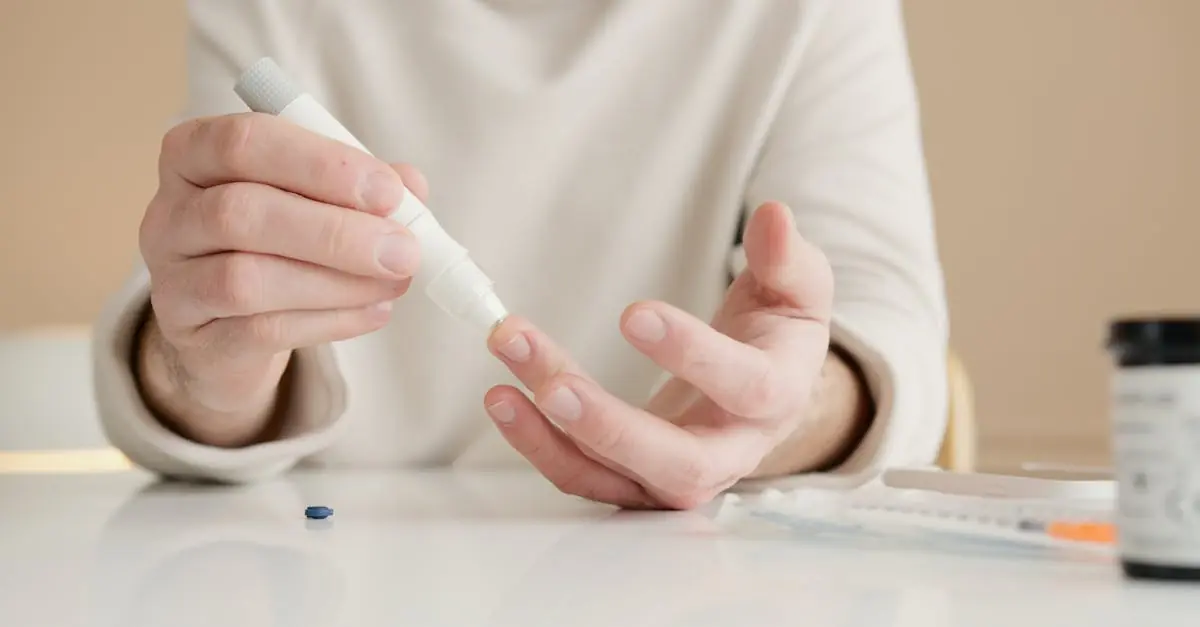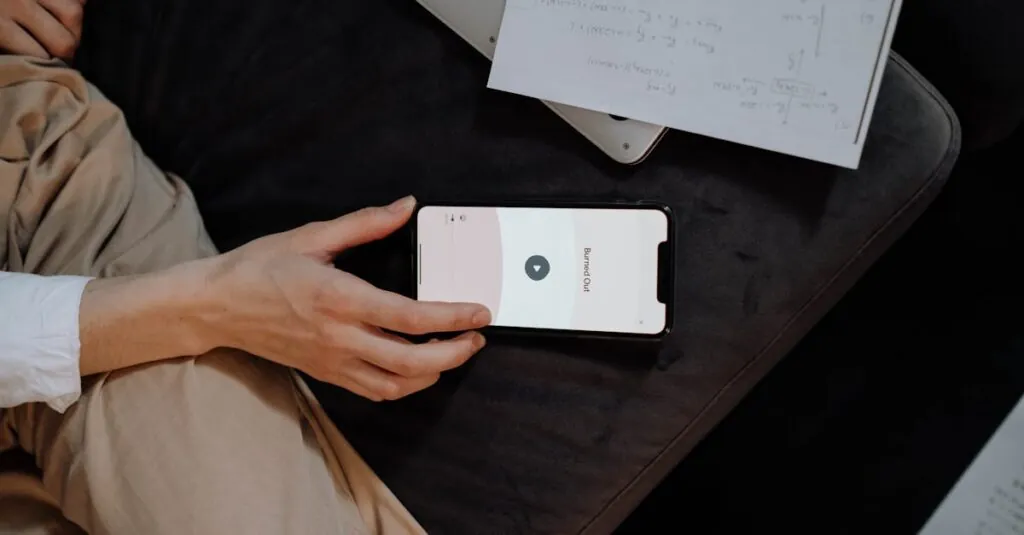Table of Contents
ToggleWhen it comes to gadgets, everyone wants to know: can it survive a dramatic tumble? Enter the world of drop test reviews, where devices face gravity’s harshest judgment. Picture this: a smartphone plummeting from a table, slow motion, while you hold your breath. Will it shatter like your dreams or bounce back like a champ?
Overview of Drop Test Reviews
Drop test reviews evaluate the durability of gadgets, particularly smartphones. These tests simulate real-world drops to assess device resilience. A smartphone’s ability to withstand impact affects user choice, emphasizing the need for reliable results.
Many reviewers drop from various heights and angles, simulating everyday usage scenarios. Testing from a desk height of 30 inches often provides crucial insights. Drop test videos attract significant attention, showcasing the suspense of each fall. Viewers eagerly anticipate whether the screen will crack or if the device remains functional.
Reviewers typically conduct multiple trials to ensure accuracy. Common results include revealing weak points, such as edges or corners of the device. Brands like Apple and Samsung frequently undergo scrutiny, given their market share. Performance in drop tests influences consumer confidence in product quality.
Manufacturers increasingly prioritize durability in their designs. Some smartphones incorporate materials like Gorilla Glass and aluminum frames for added protection. Recent models feature improved engineering to enhance survivability during drops. Testing indicates that innovations in technology can lead to better performance under duress.
Analyses of drop test reviews inform potential buyers about device longevity. Detailed comparisons highlight the differences in durability between models. Consumers benefit by understanding how phones behave under stress, guiding their purchasing decisions. As durability becomes a defining characteristic, drop test reviews play a crucial role in the gadget market.
Importance of Drop Testing
Drop testing significantly impacts consumer perceptions and product reliability. These assessments reveal how gadgets, particularly smartphones, withstand everyday accidents.
Impact on Product Durability
Testing devices through drop tests provides essential data on structural integrity. Smartphone manufacturers enhance designs to withstand various heights and angles during falls. Results indicate where vulnerabilities exist, guiding improvements in materials and engineering. For instance, a 30-inch drop offers valuable insights into performance. Each trial uncovers specific weaknesses, prompting brands to innovate. As engineers address these issues, overall durability increases, directly influencing product longevity.
Consumer Trust and Brand Reputation
Drop test reviews shape consumer trust significantly. Positive test outcomes foster confidence in a brand’s commitment to quality. Shoppers often rely on these evaluations before making a purchase. Brands receiving high marks in durability tend to build a loyal customer base. In contrast, poor performance can damage reputations, leading to decreased sales. Transparency in reporting results helps consumers make informed decisions, reinforcing brand credibility. Ultimately, consistent durability leads to increased consumer satisfaction and brand loyalty.
Popular Drop Test Methods
Drop test methods provide valuable insights into gadget durability. Two prominent techniques determine how well devices withstand falls.
Standardized Testing Procedures
Standardized testing procedures involve set heights and angles for consistent results. This approach typically features a standard drop height, usually around 30 inches. Reviewers often drop devices face-down, back-down, and edge-down. Results from these tests help compare various models objectively. Each test reveals specific vulnerabilities in devices, assuring potential buyers of their resilience. Popular among tech enthusiasts, these tests frequently influence purchasing decisions. Organizations, like Consumer Reports, adopt these standardized methods to ensure reliability and transparency.
Real-World Scenario Testing
Real-world scenario testing replicates everyday conditions that consumers encounter. Reviewers drop devices from typical heights, such as countertops or pocket levels. These methods add context to the results, showcasing how gadgets handle common accidents. Reviewers also assess damage potential from side drops or drops onto hard surfaces. Data gathered from these realistic tests enhances consumer understanding of device durability. Moreover, it emphasizes how manufacturers address vulnerability in their designs. Insights from real-world testing resonate with shoppers looking for reliable and sturdy gadgets.
Reviewing Leading Drop Test Providers
Several companies specialize in drop test reviews, providing valuable insights into device durability. Each company has unique strengths and weaknesses that influence their results and reputation.
Company A: Strengths and Weaknesses
Company A excels in standardized testing, conducting thorough evaluations from set heights and angles. Consistency in their methodology attracts attention from consumers. They effectively highlight vulnerabilities in popular smartphones, helping users understand potential risks. Accuracy in results builds credibility within the industry. However, some critique the lack of real-world scenario testing, limiting the comprehensive understanding of device performance. By focusing on rigorous lab conditions, the company sometimes misses insights on everyday usage scenarios.
Company B: Strengths and Weaknesses
Company B emphasizes real-world scenario testing, employing diverse drop heights and angles that reflect daily usage. This approach resonates with shoppers looking for practical insights. They often provide detailed analysis, breaking down the impact of different drops on devices. Transparency in their reporting boosts trust amongst consumers. Critics argue that their processes vary significantly between products, leading to inconsistent results across different models. As a result, potential buyers may find difficulty in comparing devices based on these tests.
Company C: Strengths and Weaknesses
Company C stands out for its innovative drop test methods, integrating advanced technology for more dynamic testing environments. They capture detailed data that showcases how devices respond to numerous impact forces. Engaging visuals in their reviews attract a wider audience, making them popular among tech enthusiasts. Although they generate exciting content, some users question the replicability of their tested conditions in everyday life. Addressing this concern could enhance their credibility, as buyers often seek reliable predictions for real-world performance.
Key Takeaways from Drop Test Reviews
Drop test reviews offer vital insights into the resilience of gadgets, especially smartphones. Consumers often discover which models withstand everyday accidents, helping them make informed choices. Height and angle play critical roles in testing; most reviewers drop devices from 30 inches to simulate typical situations.
Durability has become a significant factor during the purchasing process. Manufacturers like Apple and Samsung focus on incorporating materials like Gorilla Glass and aluminum frames. Improved engineering in recent models enhances their survivability when dropped, which directly influences consumer trust and satisfaction.
Multiple trials during drop tests ensure accuracy, revealing weaknesses in devices. Reviewing companies, such as Company A and Company B, provide a range of methodologies that affect results. Company A excels in standardized testing, delivering consistent insights. In contrast, Company B emphasizes real-world scenarios, although some variations exist in their methods.
The findings from these tests foster confidence in brands that perform well. High durability ratings often lead to loyal customer bases. When devices receive poor performance ratings, brands risk damaging their reputations. Transparency in test results strengthens brand credibility, assuring customers of the quality and longevity expected from their purchases.
Innovative testing methods also play a crucial role in the evaluation process. Companies that adapt their testing to reflect real-life situations connect with consumers looking for reliability. Ultimately, drop test reviews shape the landscape of gadget evaluations, empowering shoppers with knowledge that directly affects their purchasing decisions.
Conclusion
Drop test reviews are essential for understanding gadget durability and resilience. They provide consumers with valuable insights into how smartphones perform under stress. As manufacturers prioritize sturdiness in their designs, these tests become increasingly relevant in guiding purchasing decisions.
The impact of drop test results extends beyond consumer confidence; it shapes brand reputations and loyalty. Positive outcomes can lead to increased trust while poor performance can tarnish a brand’s image. As technology evolves, so do testing methods, ensuring consumers receive accurate and relatable information.
Ultimately, drop test reviews empower shoppers to make informed choices, reinforcing the importance of durability in today’s gadget market. With every test, consumers gain a clearer picture of what to expect from their devices, fostering a more reliable and satisfying buying experience.




